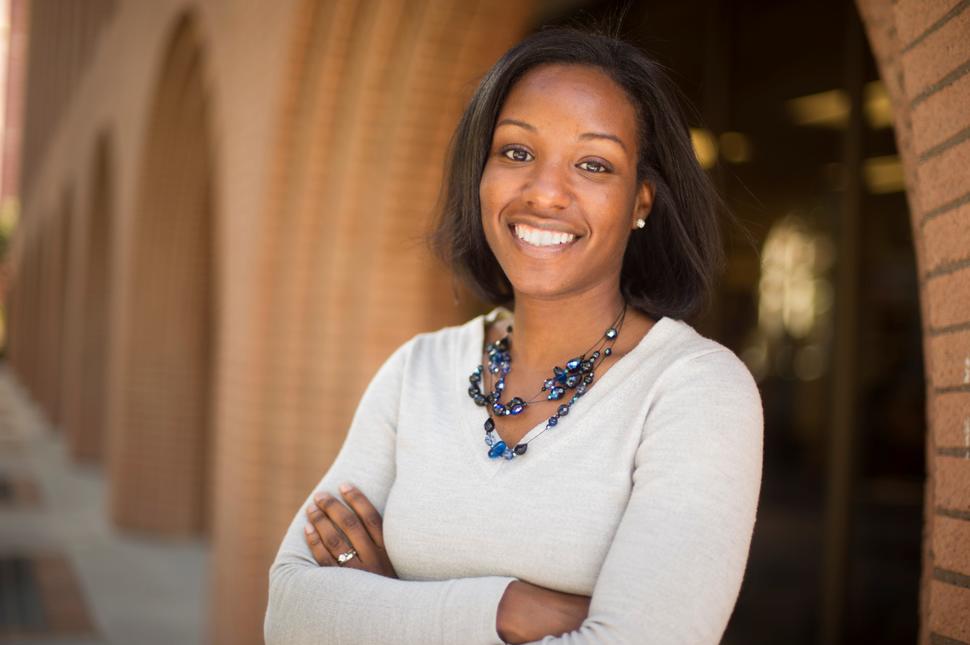Stacey Finley, Ph.D., a CSBC Investigator at the University of Southern California (USC), is working to identify new drug targets for cancer by studying the disease as a system of biochemical reactions.
She trained in chemical engineering, since she was excited by the application of math, physics, and chemistry to solve problems.
As an undergraduate, she applied her knowledge to manufacturing processes at Procter & Gamble through three summer internships. She worked to optimize refining processes for a product additive, maximize the efficiency of bar soap production, and designed experiments to understand which factors in a system contribute to the physical characteristics of dry laundry detergent particles.
Now, Dr. Finley uses engineering tools to answer biological questions about human health. In this interview, she shares career advice from her mentors, describes her views on computational systems biology, and discusses her research developing a multiscale model of colorectal cancer.
What career advice from mentors do you pass on to trainees?
I think one of the biggest things is to be resilient. You need to have resolve that your ideas are worth being pursued. Even when grant or paper reviewers critique your work, you need to persist in answering research questions that are interesting and exciting to you.
My mentors also helped me see that a diversity of perspectives is important in research, especially the study of cancer. We need to embrace the diversity of perspectives that comes from bringing together people with different personal, scientific, and educational backgrounds.
How do you define computational systems biology?
In general, systems biology is trying to understand individual processes within the context of the larger system. For example, in a signaling network, you can look at a single molecular species or individual reaction of the network. However, looking at a species or reaction in isolation doesn’t help us understand the complexity of the larger network.
Computational systems biology seeks to build systems-level mathematical models by taking advantage of experimental approaches that are generating high resolution, quantitative data integrated with computational approaches.
What skill is important for cancer research using computational systems biology?
An important skill from the computational side of cancer systems biology is being able to interact and communicate with other researchers. My lab is using data from experimental researchers to build predictive models, so we need to understand and talk with them about the data. We need to know how to use their experimental measurements to build our models. We need to know what they are saying and what the data means. Also, my lab needs to be able to communicate model predictions that are understandable to experimental researchers and clinicians.
Communication is really important for cancer systems biology research.
Can you describe the multiscale model of colorectal cancer that you aim to generate as part of your CSBC project?
There are three investigators, including myself, working on this CSBC project. We all have complementary expertise to build an experimentally validated multiscale model.
My contribution is looking inside the cell at metabolic reactions that allow the cell to take up nutrients from the environment. Cells in the tumor and tumor stroma can process these nutrients to produce the building blocks that tumors need for growth. My lab is building a model of intracellular metabolism and predicting the concentrations of molecular species inside the cell.
Paul Macklin is using a computational framework to look at the level of the cell. He’s predicting the dynamics of the cells themselves using a cell model. Additionally, Paul and I can embed the intracellular model inside the cell framework to predict cellular behavior, as well as can examine multiple types of cells within a tumor at the tissue scale.
Using a model of this level, we can study how cells interact with each other and drive the growth of the tumor. Based on the model with these different scales, we can ask, “If we change one or more metabolic reactions in a tumor or stromal cell, how will that change the growth of the tumor overall?” We can also observe that the tumor is growing in such a way, and ask, “Can we identify the main reactions that are contributing to that growth?”
We are really trying to build a mathematical model that provides a framework to test predictions at targeting metabolic reactions that would influence tumor growth.
Shannon Mumenthaler will use organoids to test and validate the predictions that we make with the mathematical model. The organoids are derived using patient samples, which puts us one step closer to ensure that our predictions are clinically relevant.
